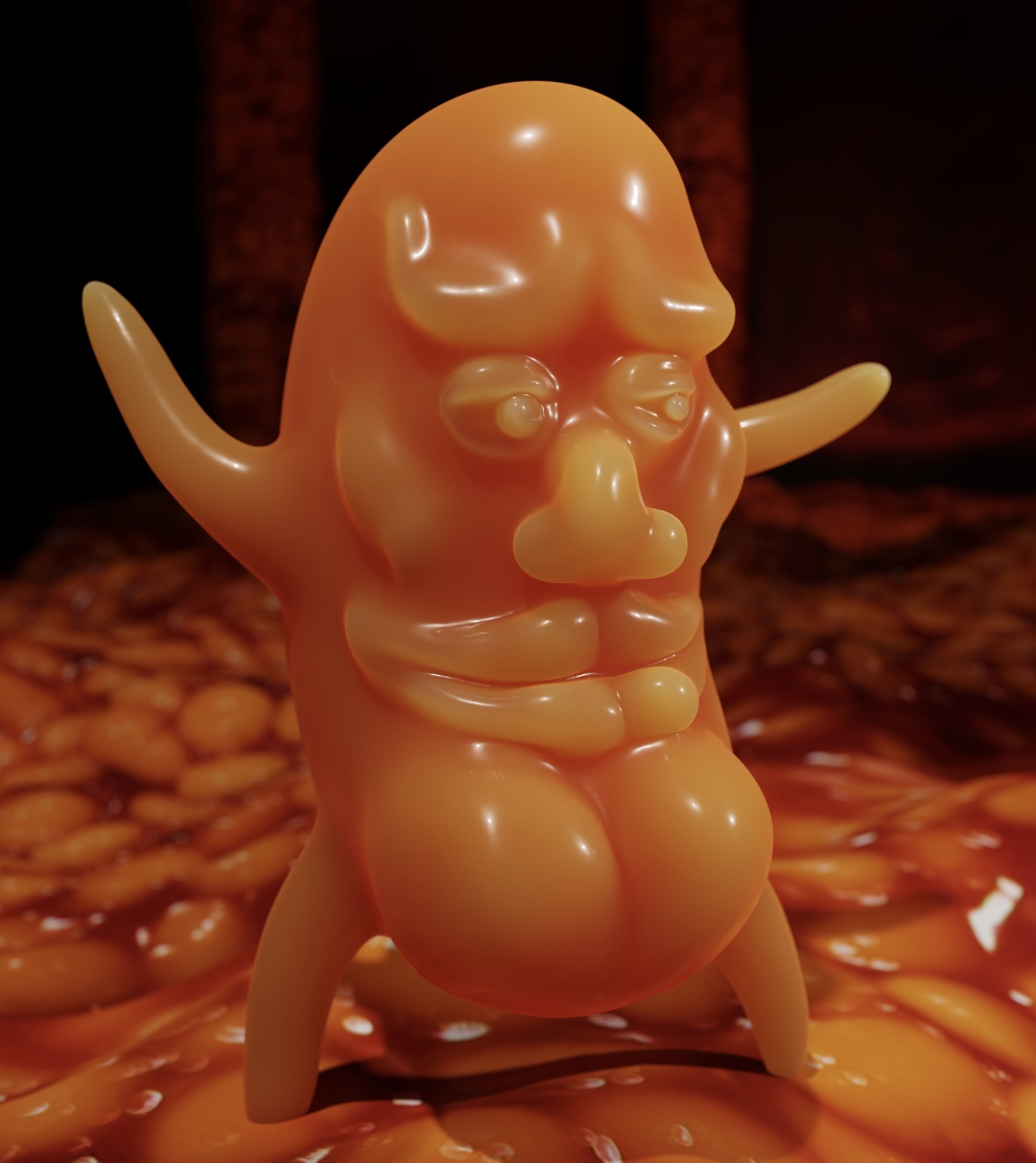I am very interested in 3D printing and I want to get into it. What would be a good printer for a beginner that is also of reasonable quality.
I don’t want to make anything huge but I don’t want to limit myself to any size that’s unreasonably small.
Edit: Wow, you guys were all so helpful. While I haven’t made my decision I have a lot more to go off of, I’m gonna do a bit more research into it based on what you have all said.
What’s you’re price range? For a solid option with a decent size I’d say a Prusa Mini. It’s big enough to print probably 90% of commonly printed models and is high quality with minimal tinkering required, but it’s not a cheap option.
The thing about Prusa is, not only do they make good products, they also have fantastic support. They may be a little more expensive, but that support is also what you’re paying for. You can either spend a ton of time hunting for troubleshooting posts in random forums and communities where YMMV, or you can rely on the Prusa docs and resources.
Don’t get me wrong, there are plenty of great printers out there too, and many work fantastic right out the box. However, when you get in a jam (pun intended), there’s nothing more comforting than knowing a company has your back.
I second this. My first printer was a Mini and it’s fantastic. Once it got dialed in I haven’t had to touch it in 2 years. Work bought an Ender 3 and having used both, I greatly appreciate the Prusa more. You can’t go wrong with a Prusa. I will only buy them going forward.
I started with a Prusa MK3s+. I don’t regret it at all.
Straight for the Cadillac of printers
I wonder if i should get the 4, i’ve had enders and am tired of the hassle. I need something reliable.
I have both a 3 and a 4. My 3 is dialed in pretty good that I trust it to just run. There is some quality of life things on the 4 that I like. The auto bed leveling is nice for swapping sheets without having to change z offset settings. For the price difference between the two I’d go with a 4.
You should first consider how much time you want to out into it. Or I’m other words, are you interested in 3D printers or 3D printing? Difference is that the first has cheap printers and might need upgrades and tweaking to get everything rolling well but you save money (most likely) and understand more about them. Second option means you dish out more money up front but get reliability and quite possibly support from the company behind the printer should you run into issues.
Haven’t been thay much looking into printers as of late but last time I checked the first option was 300-500e and second roughly 1000e. Like Ender 3 lineup vs Prusa mk3 (and now 4).
deleted by creator
deleted by creator
Depends on what you’re looking to get out of it. Printing medium-sized toys or busts or things without a lot of fine details? Probably an fdm printer like an ender 3 to start with.
Wanting to print miniatures for tabletop games like d&d or Warhammer? Probably a resin printer like a photon mono 4k or something.
The fdm printer will have a much larger build plate but lower quality, and resin will be much smaller but higher quality.
Don’t buy Ender 3, it’s not really good (it’s probably the best in cost/value ratio, but not great in general).
Ender 3 isn’t a great printer, but it’s a great starting point to make a good printer with some work. It’s not a great first printer with UNLESS you like the idea of buying a printer that needs work and plan on learning as you modify it. So, expect lots of print failures as you learn and modify the printer.
This was how I learned printing. But I started FDM a decade ago with a SeeMeCNC Orion. Very crude compared to modern consumer printers.
A buddy of mine bought an Anycubic Vyper on clearance and he’s happy with it. It has solid bed mounts and a leveling probe, which resolves half of printer problems, and it has dual Z steppers, which I think helps a lot. I believe it comes with a steel PEI bed which is easier than glass to get good prints (and much easier than painters tape or kapton like my Monoprice mini).
I started with an Anet A8 years ago (do not touch this, it was and is an extreme fire hazard and a fairly shit printer to boot), and after a ton of mods, hours upon hours of tuning and struggling, and dozens of failed prints, I bought an Ender 3 S1. I would not recommend the base Ender 3, but I love my S1 so much. Quality is pretty damn good out of the box, I have had maybe 2 failes prints out of a few hundred. I have done no calibration since I assembled it. It eats whatever filament I throw at it using Cura’s default profile for that material. Is it as good as a P1P or X1 Carbon? No, but it’s half the price of the P1P.
I followed the advice of r/3dprinter. There was a recommendation post somewhere and settled with the elegoo neptune 3 pro. However, a few weeks later the elegoo neptune 4 pro was announced and boasted much higher speeds so I just ordered that. The youtube reviews so far seem to be all positive and recommend them. I haven’t received mine yet so I can’t guarantee anything though.
Sovol sv06
This is such a great printer.
@OP, it’s almost a clone of prusa mk3s but costs $240 and works well. I’d go this route for first printer.
There are many good begginner printers. Definitely don’t cheap out though. I made that mistake and suffered for years. After I upgraded I couldn’t believe how easy 3d printing actually was.
People have made the same recommendations here already but I’ll throw my opinion in: the two I always recommend are the Ender (V2 or S1) and the Prusa (Mk4 or the Mini)
If you’re unsure about how much you’ll use it or if you’re on a budget get the Ender.
But if you’re confident this is something you’ll use a lot and you can afford it get the Prusa.
The Prusa has just too many nice features to ignore, their support is amazing, and their upgrade path makes it something you can (likely) keep upgrading as new features come out.
For example I have a Mk3 and I have the upgrade kit to make it a Mk3s+. And now that the Mk4 is out there’s upgrade kits to make it a 3.5, 3.9, or a 4. They’re really great about trying to keep your printer as feature rich as possible without having to buy a whole new one.
Bambu P1P is on sale right now and is a good choice if you want to have high quality prints straight out of the box without any tinkering.
My first printer was a creality cr6 (kickstarter edition), and it’s been absolutely fantastic. I use my printer to solve problems mostly by designing my own parts for things. My printers really are tools to me. My cr6 doesn’t get used a lot, but I turn it on, run the auto level, and hit print. I’ve printed roughly 2000 hours with it, and I’ve had one jam, and zero failed prints (I’ve stopped a couple for various reasons, but I’ve never walked in to find a spaghetti mess). I upgraded to the community firmware, a dual drive extruder, and capricorn. Also, I print almost exclusively in PLA.
My second printer is a kingroon kp3s. I’ve printed very few parts with it. I got it as a toy, and plan to install klipper and just be able to print fast. I like the small for factor, direct drive, and linear rails. It’s a decent printer, but it’s not as “easy” as my cr6 (no ABL, and my bed seems to have a high spot right in the middle). The prints I’ve printed for testing are small, and the quality has been really good. I just haven’t had a lot of time to play with it and really dial it in.
All this said… I’d by a mk4 in a split second for my use case. Again, as a tool that I turn on every few months, prusa is a known workhorse. My only complaint with my cr6 is it’s slow… And the mk4 would take care of that.
I typically split my recommendations into 2 camps. Do you want to learn a ton about 3D printers, how they work, how to troubleshoot, etc. Or do you want to “just enjoy printing things”?
While the ender isn’t a fantastic printer, it’s a great starter printer with loads of mods available that will turn it into a decent printer with some time and effort. This route will help you learn about tuning, troubleshooting, and building to the point where you’ll know your stuff once you’re happy with it. Plus, it’s not a large investment to just get started.
On the other hand, some people want to print for the sheer joy of being able to make things with a printer with minimal fuss. Completely understandable! If this is the case I’d echo others here in saying go with a Prusa mini. Prusa gear is amazing if you want to hit print and walk away and come back to a great finished print. If you want to have a taste of the world of the mechanics of 3D printing, grab a kit and build it yourself. It’s a great way to get to know your setup and it will help you troubleshoot when the odd (albeit rare) problem arises.
I don’t think there’s a wrong answer with either route here. You just need to decide what you want out of the hobby!
There are plenty of options, I will have to look up which are currently the best.
But I would recommend starting out with a normal “cube” like design. Delta printers seem cool but are not really beginner friendly.
To further ease the search I would look for a direct drive extruder. It’s easier to calibrate and you don’t have the hassle with potential problems regarding the Bowden tube.
Creality and Anycube are the goto brands for big community support, as far as I know.
I second that question.
I would like something that a beginner can learn a lot with but that’s reasonably good that I wouldn’t want to replace it for a while.
It’s a bit dated, but I had an excellent beginner 3D printing experience on my Flashforge Creator Pro. The OG.
It’s a bit slow, but very consistent out of the box. It was also pre-built, which was nice.
It was heaps easier to get going compared to my Anet A8. But I learned a lot on the A8 by putting it together.
I started with a Flashforge Dreamer - which is relatively close to the Creator Pro. Bed leveling was annoying from the beginning - though after adding some locking nuts at least stayed leveled for a while.
With PLA I was getting good prints without much effort - though quicky ran into limitations with flashprint, build volume size, other materials. I did some PETG printing, which was a pain - extruder slipping on the material, so compensating with overextrusion which somewhat worked, but gave nad tolerances.
It is now my experimentation printer -rebuilt with microswiss hotend and extruder and flashed with marlin.
That was probably one of those most succinct cons list about the Creator Pro / Dreamer I’ve heard. My experience mirrors yours.
What was your second printer?
Prusa mk3s+ with mmu2s and a mini.
Mini pretty much immediately upgraded with the Bondtech IFS extruder - great extruder, but won’t buy Bondtech kits again as their documentation is horrible. Mainly had the mini for flex and abrasive initially, as I didn’t want to mess with nozzle changes on the less accessible mk3s, and didn’t want to mess with flexible with the MMU. Upgraded it earlier this year to Revo hotend - had a bit trouble due to another delay with their hardened nozzles, but figured out you can get Revo nozzles from China with pretty much the same tolerances for 5 EUR each, so was just running through them until I finally got my obxidian nozzles.
Mk3s ran stock with MMU for a while, printed the TZB extruder in PC-CF earlier this year, switched to TZB-firmware, and also moved it to Revo - didn’t have much issues with MMU before that, but things are very noticeably faster now, plus even very flexible flex just works.
Not sure if I’ll upgrade it to the MK4 - the load cell setup is intriguing, but I don’t want to give up the Revo setup, so I’ll probably wait and see if mods will come up allowing me to use both.
Thank you!
After my recent PETG jam on the Creator Pro, due to extruder slipping and a consequential jam, I’ve been looking at options for another machine.
Maybe the MK4 is in my future.
This MicroSwiss kit should deal with the slipping - it’s relatively easy to install.
You rock. But don’t think you’re talking me out of an MK4, either. ;-)
Edit: For anyone finding this, and considering the MicroSwiss lever kit for their Creator Pro: STOP.
It’s /NOT/ a good solution based on many reviews (b/c single screw is used for tension and pivot mechanism, and the top plate is too tall / obstructs filament).
deleted by creator
Dang, you give me hope that I can rescue my own Dreamer. Are you still using the original main board? Sadly mine are fried, and Flashforge hasn’t had them in stock for a while. Ran into the same problems you did, but damn is that machine a trooper.
Still the same board, just with the wifi module removed, and instead a voltage converter and a raspberry pi ziptied into the empty space next to the board.
The alternative firmwere is here: https://github.com/moonglow/FlashForge_Marlin
Currently it’s mainly waiting on me finding time to do proper profiles for prusaslicer - though I did manage a few basic test prints.









